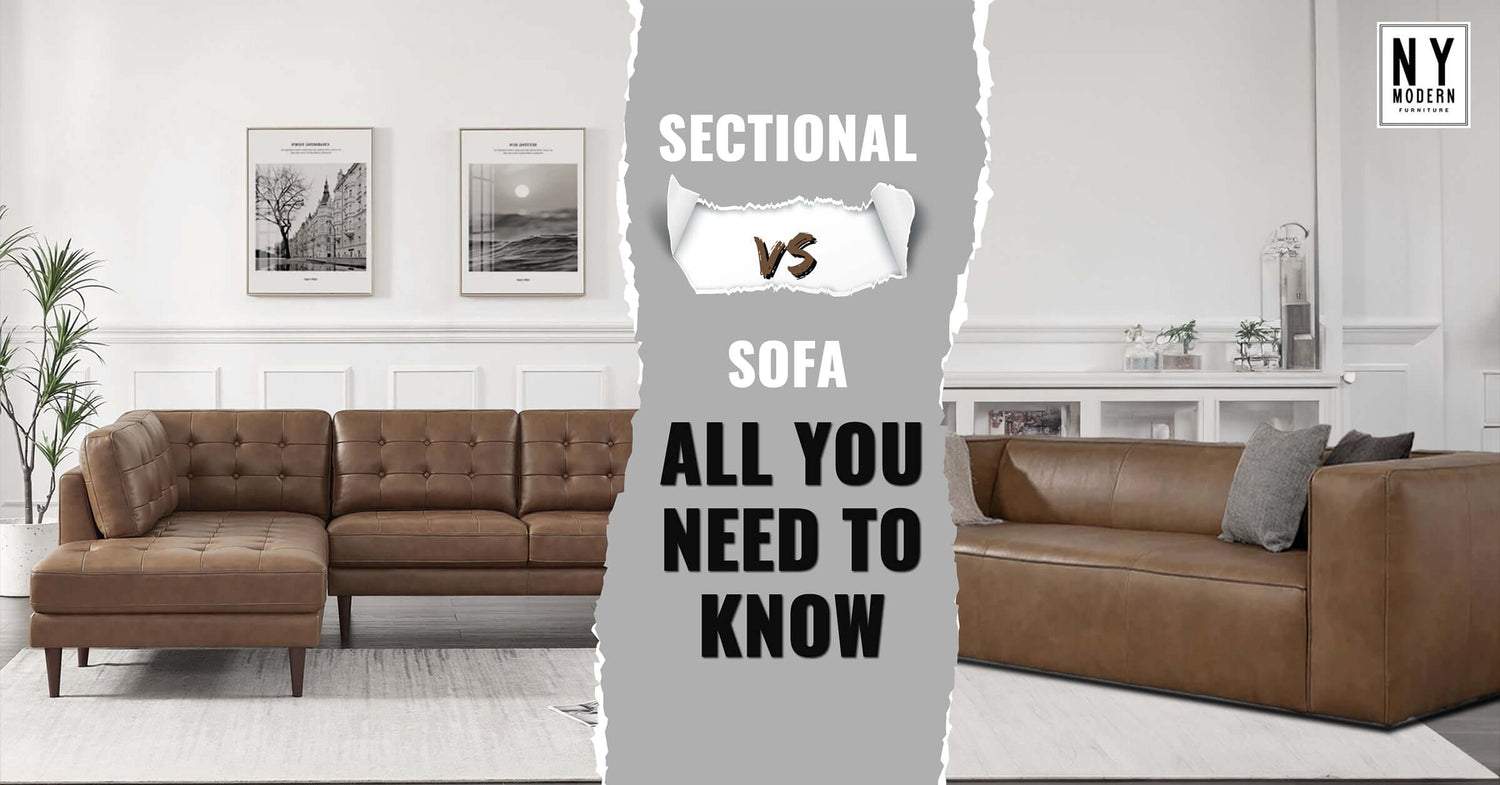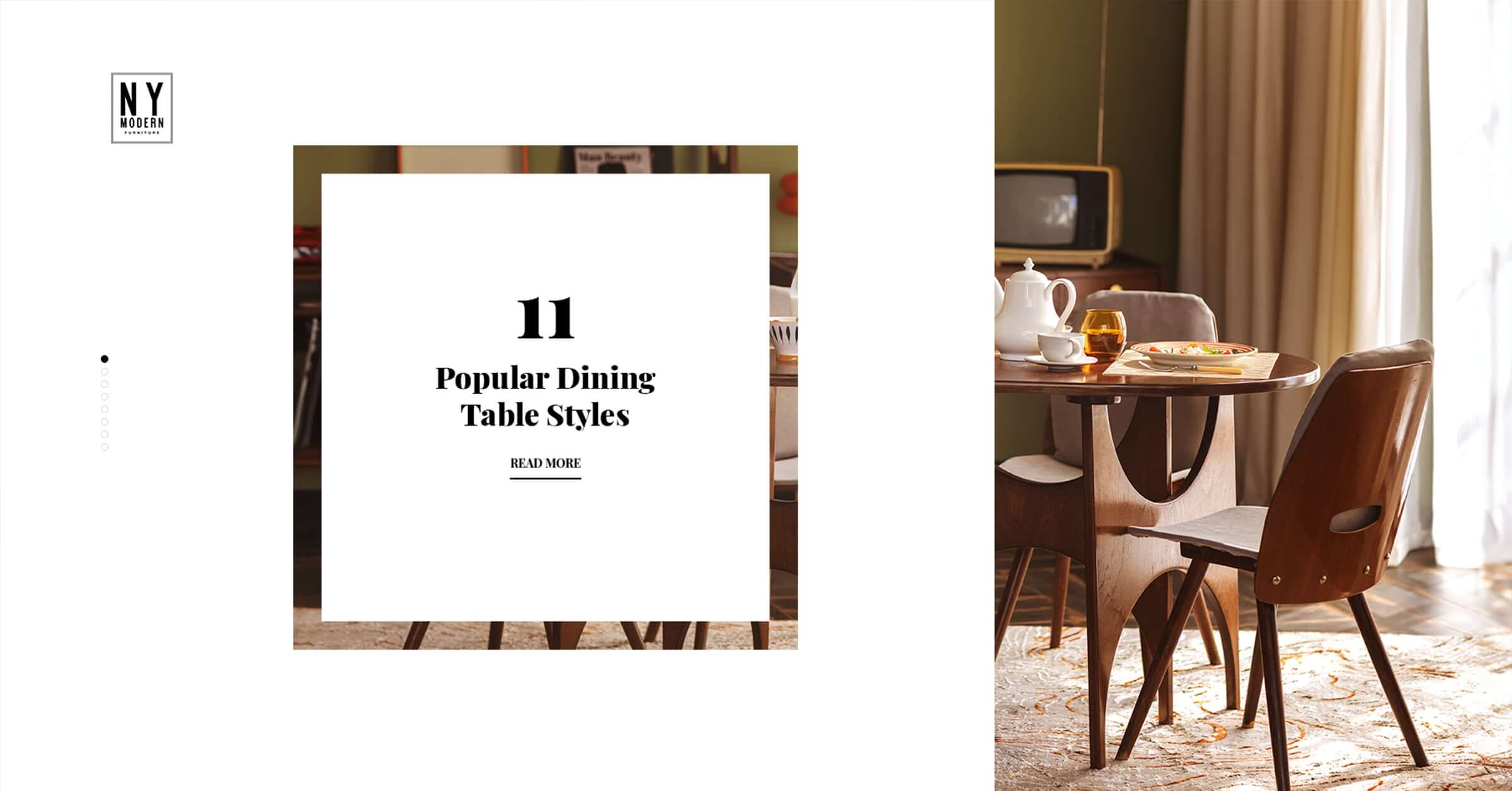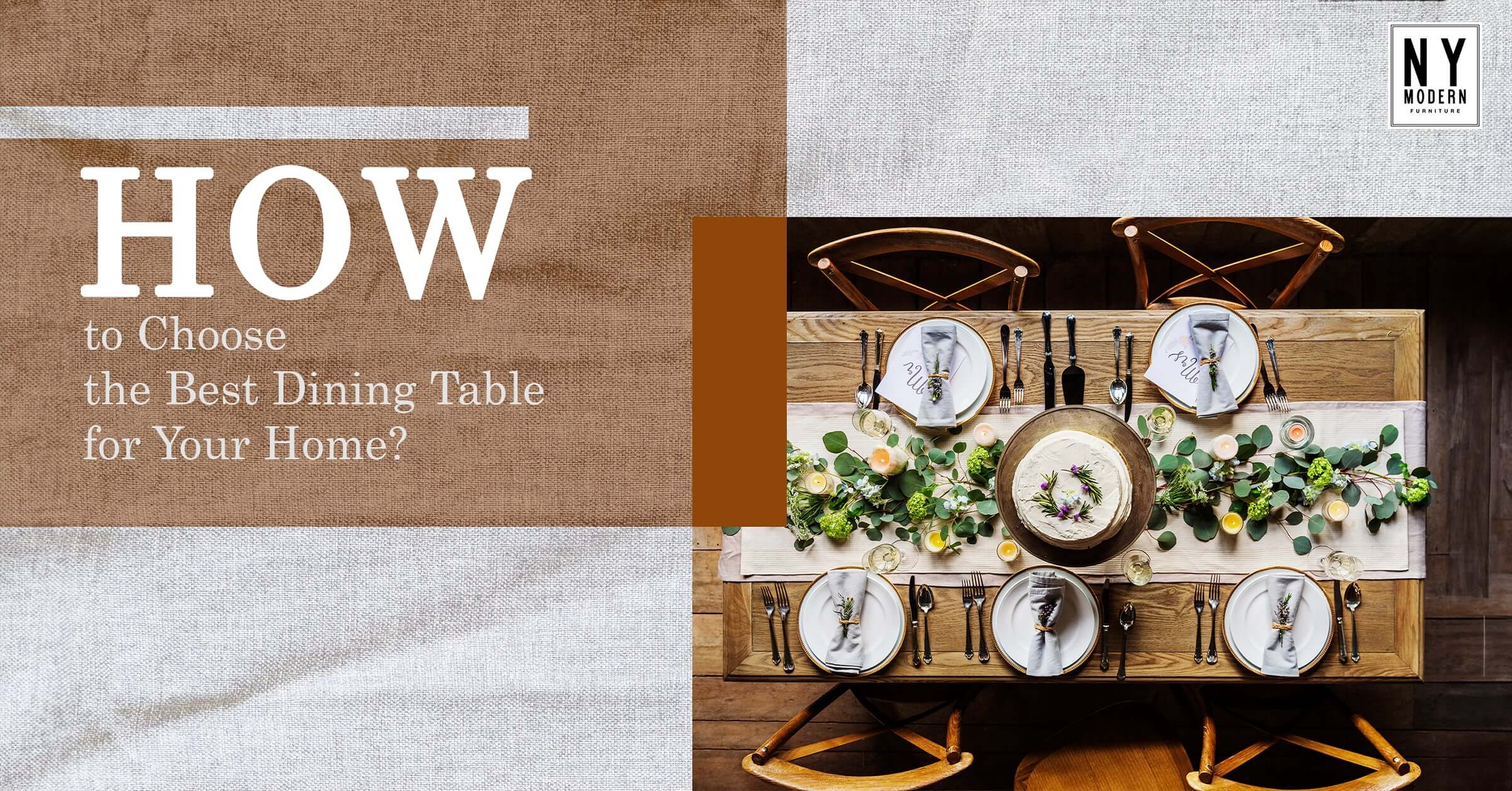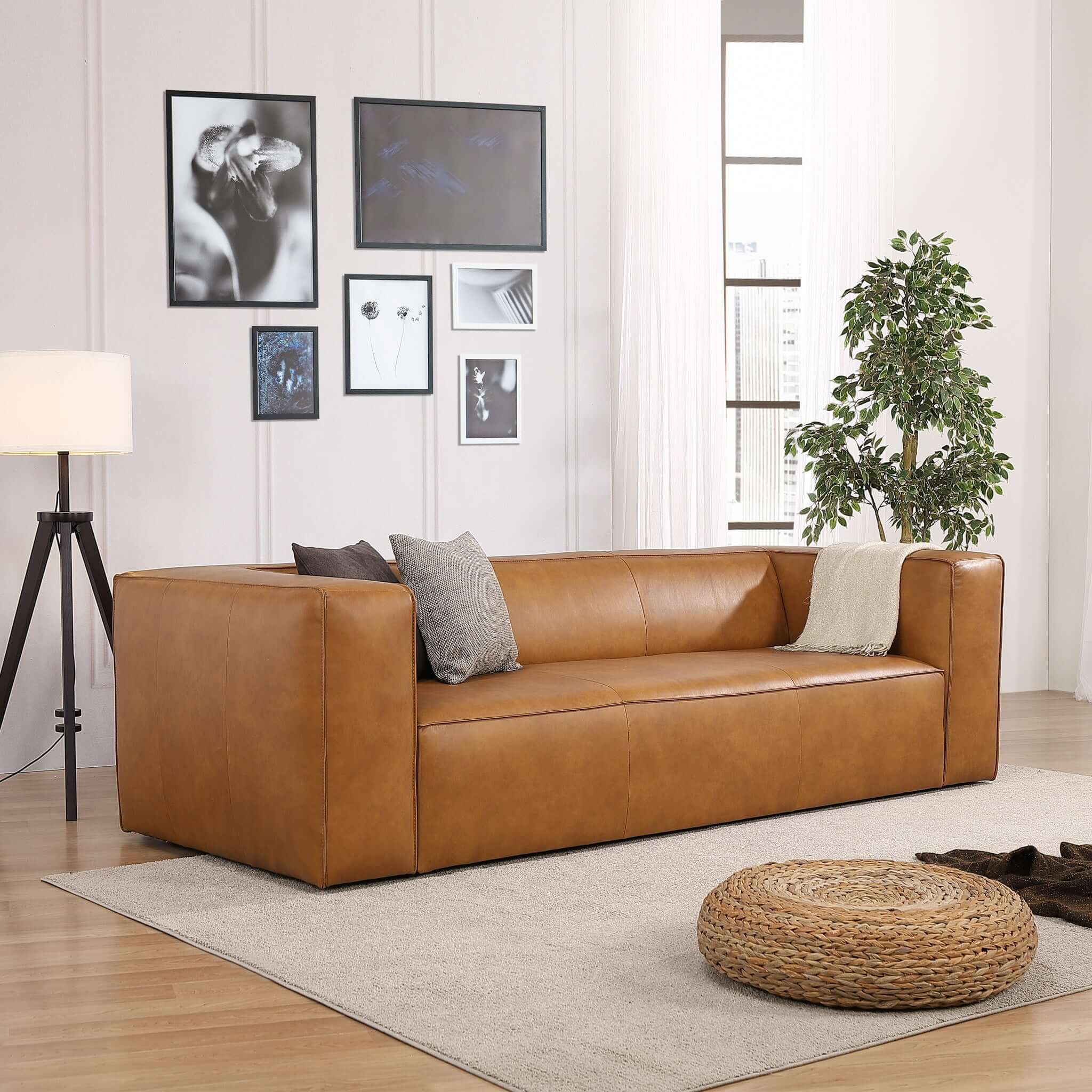Choosing between a sectional and a sofa shapes the heart of your living space, balancing aesthetics, comfort, and practicality. This blog delves into the sectional vs. sofa debate, offering insights into how each fits into various home environments. The goal is to simplify the choice, ensuring that it meets the needs of your living space and your design aspirations.

What is a Standard Sofa?
A standard sofa is a single, cohesive unit designed for comfort and style. A standard sofa typically accommodates two to three people, offering a streamlined and versatile seating solution. Its structure includes upholstered seats, arms, and a back, making it a practical choice for both small and large rooms. Standard sofas are ideal for those who appreciate a balance of form and function and are timeless additions to any home decor.

What is a Sectional?
A sectional is a versatile and spacious seating option characterized by its multiple pieces that can be arranged in various configurations. Sectionals often come in L-shaped or U-shaped designs, providing ample space for relaxation and socializing. Ideal for larger living areas, they offer a cozy, inclusive setting for family gatherings or entertaining guests. Their modular nature allows for creative layout solutions, catering to different living space's specific needs and styles.

What is the Difference Between a Sectional and a Sofa?
The main difference between sectional vs sofa lies in their structure and versatility. The differences are as follows:
- Sofas are made up of single, joined parts, while sectionals are made up of multiple connectable parts.
- Sofas adapt well to a variety of large and small spaces, whereas sectionals are more suitable for larger rooms, given their size and shape.
- Sectionals provide various layout options, such as L or U shapes, enabling customization to fit room contours, unlike sofas, which have a fixed shape and offer less space for customization.
- Sofas usually accommodate two to three people, while sectionals offer more seating.
- Sofas typically feature a classic, streamlined design, whereas sectionals present a more modern and versatile look with their multiple pieces.

What are the Advantages & Disadvantages of Standard Sofas?
Standard sofas, with their distinct characteristics, offer various advantages and disadvantages compared to sectionals. They cater to various needs, from space-saving designs in smaller apartments to elegant statement pieces in larger homes.
Advantages of Standard Sofas Compared to Sectionals
Standard sofas are a popular choice due to their versatility and various advantages. They offer practical solutions in terms of space, budget, and design, making them a preferred choice in diverse living environments.
Here are 6 main advantages of choosing standard sofas over sectionals:
1. Better for Smaller Spaces
Sofas, with their compact and streamlined design, are ideally suited for smaller spaces. They provide comfortable seating without dominating the space, ensuring the room remains open and inviting. Unlike sectionals, which can overwhelm a limited area, sofas offer the perfect balance of functionality and style.
2. Cost-Effective
Sofas offer a more economical option compared to sectionals. Their simpler design and smaller size typically require less material and labor, which means a lower price. This affordability makes sofas an attractive choice for those decorating on a budget without sacrificing style or comfort.
3. Easier to Move and Rearrange
Sofas, with their straightforward and less bulky design, are easier to move and rearrange than sectionals. This flexibility is particularly beneficial for those who enjoy refreshing their living space layout or have to move frequently. This ease of movement also caters to homeowners' evolving design preferences, ensuring that adapting to new styles or layouts remains a simple and enjoyable process.
4. Simpler Aesthetic
Simplicity allows sofas to blend seamlessly into different interior styles, from modern to traditional. Unlike sectionals, which can sometimes look bulky or dominate a room, sofas offer a more understated elegance. Their clean lines and less imposing stances complement existing decor, making them a versatile choice for any living space.
5. Less Maintenance
Sofas require less maintenance than sectional sofas. Their design, with fewer cushions and a simpler structure, makes them easier to clean and maintain. Unlike sectional sofas, which can have multiple parts and configurations that can make maintenance difficult, sofas require simple maintenance.
6. Flexibility in Room Layout
Sofas provide much more flexibility in room organization. Their design allows them to be easily paired with other types of seating, such as loveseats and chairs, creating a dynamic and adaptable living space. Unlike sectional sofas, which can be more rigid in their layout due to their size and shape, sofas offer the freedom to experiment with different layouts, allowing the living space to evolve with changing needs and preferences.

Disadvantages of Standard Sofas Compared to Sectionals
In addition to their advantages, standard sofas have some disadvantages compared to their sectional counterparts. These limitations can affect the functionality, aesthetics, and overall utility of sofas in various living spaces.
1. Limited Seating Capacity
Sofas offer limited seating capacity compared to sectional sofas. This is a significant disadvantage during large gatherings or family events that require ample seating. This limitation is especially evident in large living spaces, where maximizing seating capacity is crucial.
2. Less Customizable
Sofas have limited customization options regarding layout and design. This limitation can significantly disadvantage those who desire a personalized living space. The fixed nature of sofas restricts their ability to change their form, making them less ideal for those looking for a unique or adaptable furniture setup.
3. Not Ideal for Large Spaces
In large spaces, sofas may not fill the space as effectively as a sectional. This leaves the room feeling underutilized or lacking in comfort. The linear and more compact nature leaves significant areas of a large room unused. This is especially noticeable in open-concept layouts or rooms designed for social gatherings.
4. Limited Comfort for Lounging
Sofas are versatile and stylish but may not be as comfortable for lounging or sprawling as sectional sofas. Standard sofas' more structured and linear design often limits their ability to recline or lie down. This makes them less ideal for prolonged lounging sessions or cozy, relaxed environments.
5. Aesthetic Limitations
While sofas are versatile, they may not make as strong a design statement in a room as a large sectional sofa. While adaptable to different styles, the simpler presence of sofas does not draw the same attention or effectively define the space, especially in larger rooms where a bold design statement is desired.
6. Reduced Social Interaction
The linear configuration of sofas reduces social interaction. The straight-line design of traditional sofas directs attention forward, limiting face-to-face interaction and making socializing less spontaneous, especially in larger gatherings where people sit side by side rather than facing each other.

What are the Advantages & Disadvantages of Sectionals?
Sectional sofas have various advantages and disadvantages compared to standard sofas in design and functionality. These differences play an important role in determining the suitability of sectional sofas for different living spaces and lifestyles.
Advantages of Sectionals Compared to Standard Sofa
Sectional sofas stand out as a superior choice in many living spaces due to their distinct advantages over standard sofas. These advantages, combined with their comfort and social-friendly layout, make sectional sofas an attractive option in modern home furniture.
1. Greater Seating Capacity
Sectional sofas offer more seating than standard sofas, making them an ideal choice for large families or those who frequently entertain guests. Their expansive design accommodates more people comfortably, fostering a more inclusive and social atmosphere in living spaces. This feature is beneficial in homes where gathering together is a regular activity.
2. Customization and Flexibility
Sectional sofas are renowned for their customization and flexibility. They come in various configurations, like U-shaped, chaise, L-shaped, or pit sectionals, offering the freedom to rearrange them according to specific room needs and preferences. This adaptability makes sectionals particularly appealing for those who seek a personalized living space.
3. Optimal Use of Space
Sectional sofas effectively utilize space, especially in large rooms. They are strategically placed to enhance the functionality and aesthetic appeal of the room. Their ability to adapt to the contours of a room and provide ample seating without cluttering the space makes them an asset to any large living space seeking style and practicality.
4. Enhanced Comfort for Lounging
Sectionals, with their extended designs, including options like chaise lounges, offer superior comfort for lounging and relaxation. The additional space and flexibility they provide make for a more comfortable seating experience, ideal for lounging, napping, or unwinding at the end of the day. Their design also makes them a comfortable option.
5. Aesthetic Presence
A sectional creates an aesthetic focal point in a room, creating a stronger design statement than a standard sofa. The size and shape of sectionals make them stand out by offering functionality and a bold aesthetic. They provide a stylish and effective presence that enhances the overall decor.
6. Socially Conducive Layout
This layout is socially conducive and ideal for family time. Unlike the linear layout of standard sofas, sectional sofas often form L or U shapes, naturally creating a shared space where people can face each other and interact more easily.
The shape of sectionals promotes a more inclusive and interactive environment.
Disadvantages of Sectional Sofas Compared to Standard Sofas
While sectional sofas offer many benefits, they also come with several important disadvantages, especially when compared to standard sofas. These disadvantages, along with the difficulties in transporting and maintaining sectional sofas, make them less versatile than standard sofas in certain living environments.
1. Space Requirements
Sectionals require more space than standard sofas. This characteristic can make them less suitable for smaller rooms, where they might overwhelm the space. Their size and shape can dominate a compact room and leave little space for other furniture or movement. This limitation is a particular consideration in homes with small living spaces.
2. Higher Cost
Sectional sofas are more expensive than standard sofas due to their size and complexity. The various configurations available for sectionals, such as U-shaped, chaise, L-shaped, or dimpled sectionals, are costly because they often mean more material and complex design.
3. Less Flexibility in Placement
Sectionals, due to their fixed configurations, offer less flexibility in placement compared to standard sofas. This limitation restricts the possibilities of room organization, especially in spaces that undergo frequent design changes or require versatile furniture arrangements.
4. Challenging to Move
The size and modular nature of sectional sofas make them more difficult to move and transport. Unlike standard sofas, which are typically one-piece, sectional sofas are cumbersome. This complexity also increases the difficulty when rearranging them within a room or moving them to a new location.
5. Complexity in Cleaning and Maintenance
The multiple sections and cushions of a sectional make cleaning and maintenance a challenge. The modular nature of sectional sofas also means that dirt and debris can accumulate in the gaps between sections, requiring more thorough and frequent cleaning. It can also be difficult to maintain a sectional's overall look and structure, as each section can wear differently over time.
6. Risk of Unused Sections
Sectional sofas are very versatile, but if there are unused sections, this leads to inefficient use of space. This problem is particularly common in certain room layouts where the shape of the sectional may not match the room's dimensions or the way it is used.
FAQs
Do Sectional Sofas Save Space?
Sectional sofas are not space-saving as they require more space than standard sofas. This is because, due to their larger size and fixed configuration, they can take up significant floor space, especially in small rooms.
Are Sectional Sofas Practical?
The practicality of sectional sofas depends on the specific needs and layout of the living space. Sectional sofas can be quite practical in large rooms or open-plan spaces, where they provide ample seating and help define spaces.
Why Are Sectionals More Expensive Than Sofas?
In the sectional vs couch comparison, sectionals often have a higher price tag than standard sofas. Sectional sofas require more materials and complex labor. This increased use of materials and design and manufacturing complexity contribute to a higher cost.






Leave a comment
All comments are moderated before being published.
This site is protected by hCaptcha and the hCaptcha Privacy Policy and Terms of Service apply.